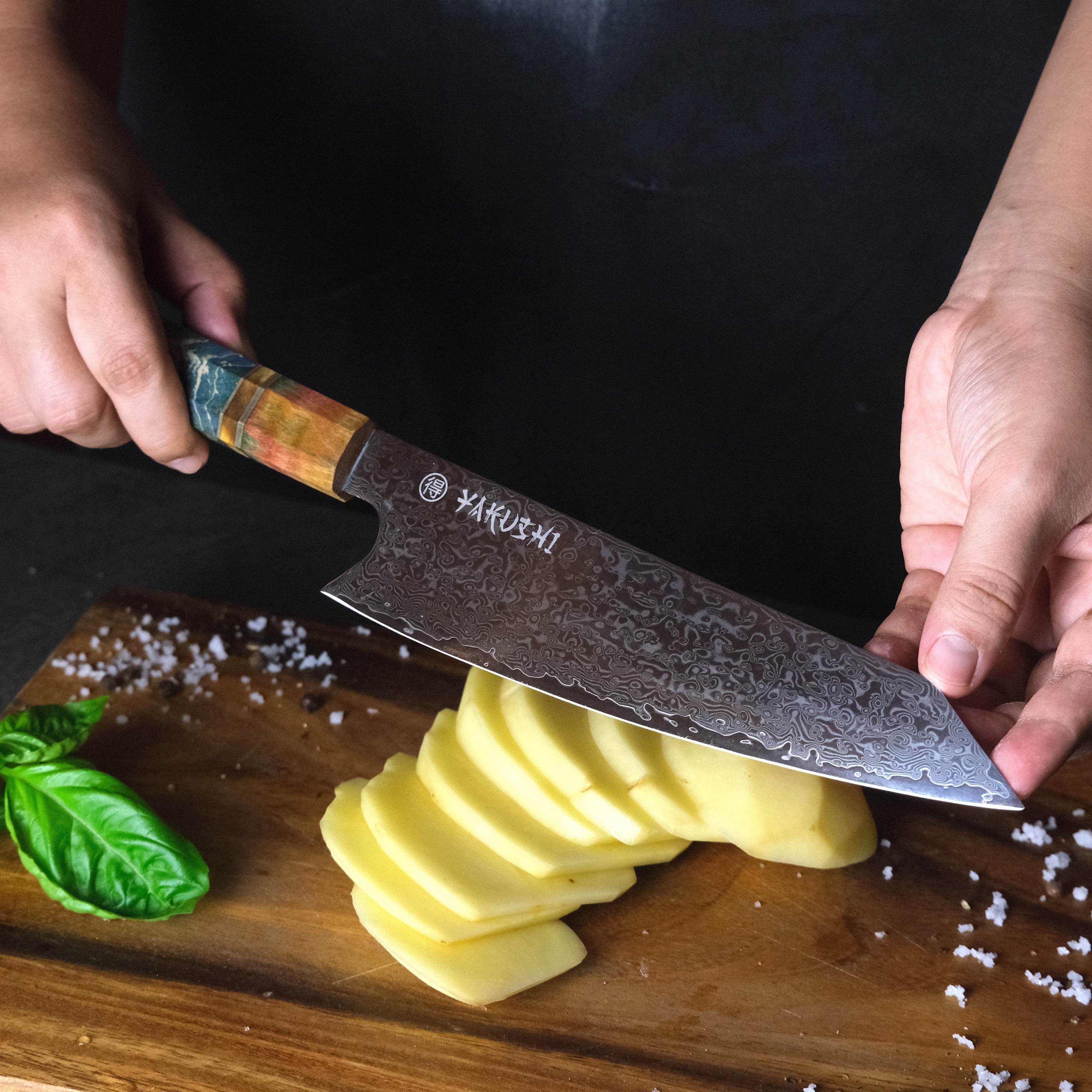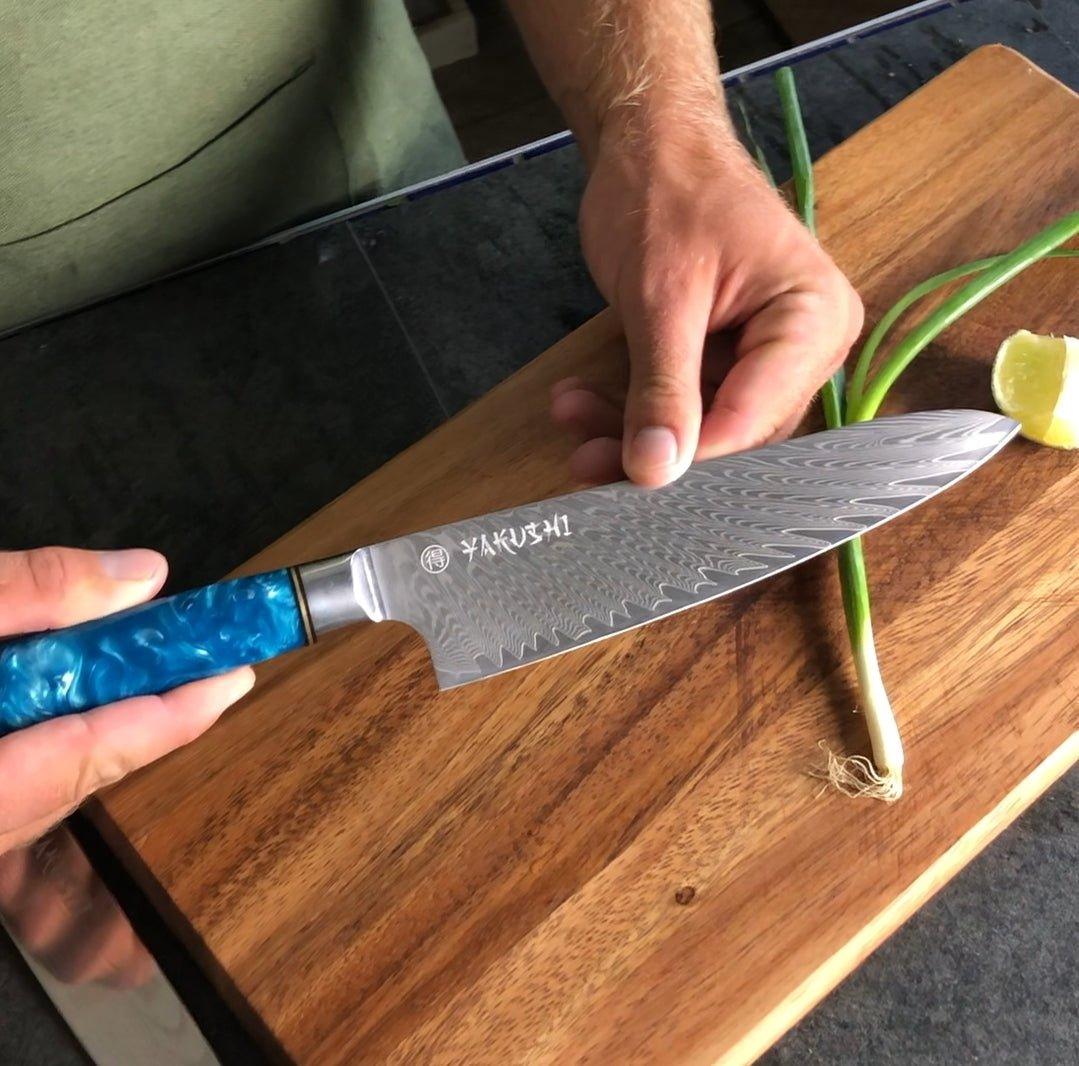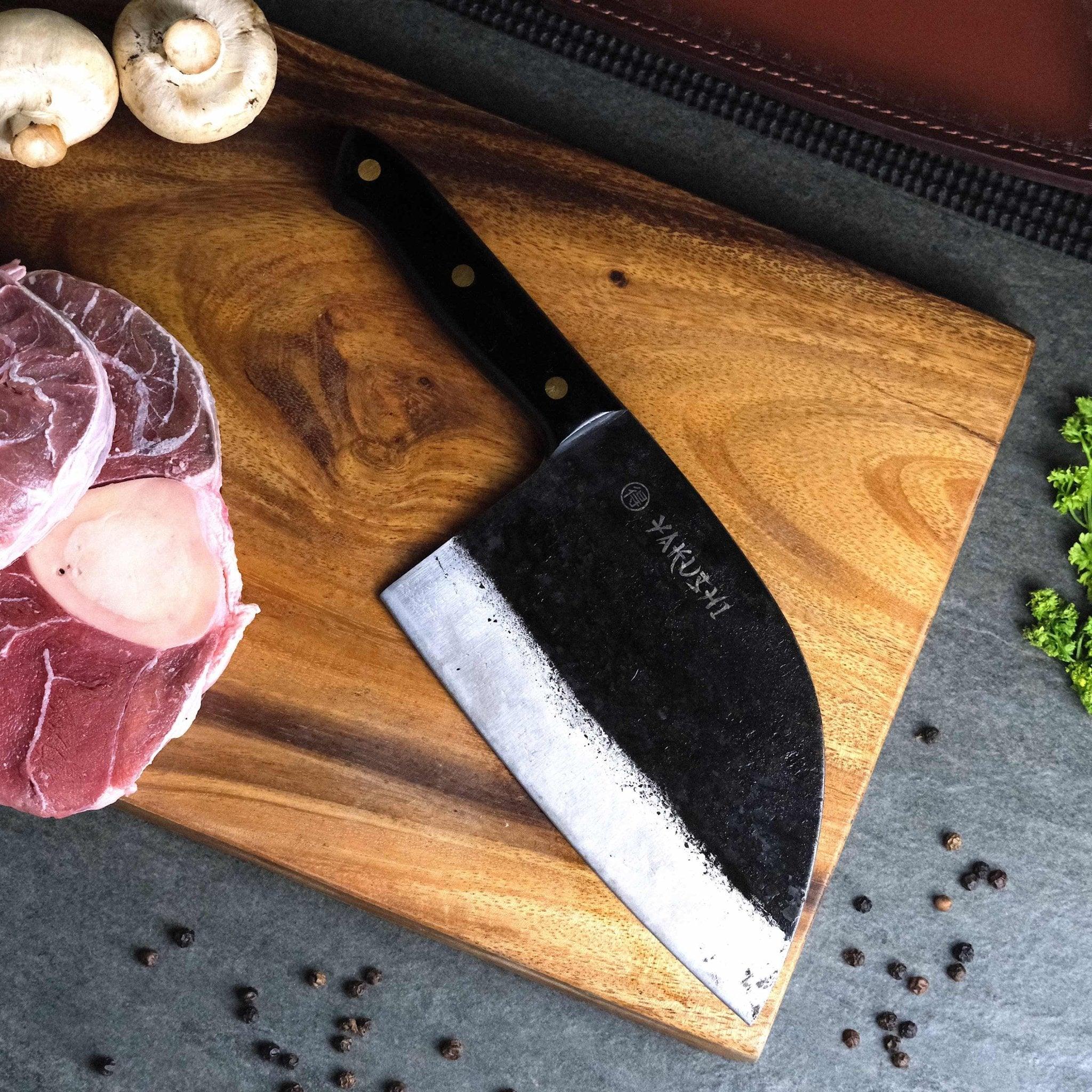Complete Guide
Different Types of Kitchen Knives
A Brief Introduction
Can you imagine a day in your kitchen without a knife? It would be a disaster if you are unable to harness the power of kitchen knives in your cooking journey. Whether you are an experienced chef or a beginner, knives make an integral part of the list of your essential kitchen tools.
And taking a peek at a knife block, we can conclude that different kinds of knives are there to streamline your day-to-day kitchen journey. A good kitchen knife is designed to help you achieve precision in your chopping and cutting tasks that mark the beginning of any recipe preparation. Nonetheless, it is also crucial to choose the correct set of knives to prepare delectable recipes with creativity as well as confidence.

A Wide Array of Kitchen Knives: A Discussion
Do you wonder why you should know about various types of kitchen knives? One of the key reasons is to take your confidence and efficiency in the kitchen to the next level. For instance, you should know if a steak knife can be used in applications other than preparing steaks or if kitchen shears are just a type of scissors.
In essence, when it comes to cutting and chopping, you need to know which knife is the best suitable for that task. Hence, are you excited to know about various types of kitchen knives available to ease your cooking journey? Let us talk about it.
The Most Crucial Knives for Your Cooking Journey
Chef’s Knife: When it comes to various types of kitchen knives, the first type that comes to a chef’s mind is a chef’s knife. Alternatively known as a cook’s knife, a chef’s knife contributes the most out of all blades in your day-to-day cooking journey. In other words, if you are a first-timer in the kitchen and looking for the most important blade, then the answer is a chef’s knife.
Hosting a vast blade, a chef’s knife is designed to work back and forth to speed up mincing. You would find this knife’s length to be anywhere between 6 to 12 inches. When it comes to choosing the correct size of a cook’s knife, you have to consider the size of your hands.
It is best to opt for a forged chef’s knife since it has to withstand day-to-day kitchen activities. Most chef’s knives are available with a full tang to make sure of better robustness as well as stability.
When it comes to applications, a chef’s knife can handle almost all sorts of cutting tasks whether it is about chopping hard vegetables or cutting chicken. Did you know a chef’s knife is called the king in the kitchen owing to its diverse applications?
Utility Knife: The name is self-explanatory in that it is a useful kitchen knife due to its applications. When it comes to cutting too small ingredients to be handled by a chef’s knife, a utility knife comes as a rescuer.
That makes it a not-so-decent tool for slicing, cutting, or chopping large ingredients. Nonetheless, the combination of the small apex and slim blade makes it an ideal knife for trimming as well as thinner slicing.
Did you know a utility knife can handle filleting better than a cook’s knife? Some utility knives are available with one sharpened side whereas the rest are available with both sides sharpened. It is up to you which option would be the best fit for your kitchen.
Santoku Knife: Are you familiar with the Western-style chef’s knife? If yes, then note that the Santoku knife is only the Japanese counterpart of the same. Some people like to use a Santoku knife as a replacement for a chef’s knife on many occasions where a lighter and smaller blade is preferred.
Santoku knives are a versatile kitchen tool, which can handle almost every task that a regular chef’s knife can do. Whether your recipe needs slicing, dicing, or mincing of ingredients, the Santoku knife has got you covered.
Nonetheless, a Santoku knife comes with a flat blade, which is why it is unable to rock back and forth on a chopping board, unlike a chef’s knife. It makes this knife less efficient for mincing herbs. On the other hand, when it comes to preparing thin slices of vegetables, the Santoku knife can do wonders.
A Santoku knife is a combination of dull tip and a petite blade that makes it an ideal tool to chop vegetables, fruits, and herbs faster. You can also leverage the power of a Santoku knife to slice and mince meats. And all these aspects prove the excellent versatility of the Santoku knife in the kitchen.
Kitchen Shears: Do not go for looks when it comes to kitchen shears, as they might look like a not-so-important kitchen tool. However, the reality is the complete opposite, as kitchen shears are among the most crucial implements.
Although kitchen shears cannot be technically considered kitchen knives, you can easily replace a knife with them in many applications. Kitchen shears feature robust and thick blades to work on an array of ingredients. Whether you want to prepareshrimp or separatechicken or cut herbs, a pair of scissors called kitchen shears comes as an ideal solution.
Some Additional Knives to streamline your Cooking Journey
The previous section was dedicated to all-purpose knives, but this segment would let you know about some well-known knives for particular uses.
Steak Knife: Steak knives come as one of the most common kitchen knives for handling cooked food items. When it comes to cutting fish, chicken, or steak, the steak knife (also known as a table knife) makes an ideal option.
In short, steak knives are available with different edges, such as non-serrated, semi-serrated, and serrated. Non-serrated options are easy to sharpen, but they become blunt in less time. On the other hand, the serrated counterparts can preserve their sharpness for longer without getting sharpened.
Bread Knife: The name is self-explanatory in that a bread knife contributes to slicing bread. Moreover, it is also used to cut cakes, seafood, poultry, and meat. The bread knife is an integral part of a knife block in the kitchen.
The unique design of this knife lets user’s cut bread pieces without crushing them. Having a slim and straight blade, a bread knife’s length can be anywhere between 7 to 10 inches. Note that bread knives are always available as serrated with teeth.
Boning Knife: If you are a meat and fish lover, a boning knife should be present in your knife block. Whether you want to filet fish or debone meat or cut meat, you would need a boning knife in your kitchen.
Apart from being a companion to preparing your fish and meat recipes, a boning knife can also be used to trim or peel vegetables, but the knife size should be smaller.
The length of a boning knife may be anywhere between around 3 to 8 inches. However, the width of this kitchen tool may vary from one knife to the other. In addition, you can choose your preferred option from stiff, semi-flexible, and flexible variations. When it comes to day-to-day kitchen life, a boning knife with a stiff blade comes as the most popular option. It makes sure of precision during deboning and filleting.
Paring Knife: Do you think garnishing is an integral part of food preparation? Then, you need to hold the hands of a paring knife in your cooking journey. The combination of a sharp tip and a 3 to 4-inch blade makes the paring knife an excellent tool for peeling and chopping vegetables and fruits. Moreover, it can also be used to cut additional fat with much accuracy.
The knife block in your kitchen is incomplete without a paring knife in it. A paring knife comes with a small yet sharp blade as well as a short handle. That is how it becomes a versatile kitchen tool to cater to many cooking-preparation requirements, such as peeling vegetables and fruits.
Did you know a paring knife can chop ingredients into extremely small pieces? In addition, you can also harness its power to carry out various delicate preparation tasks. You already know some knives can be replaced with other knives in the kitchen. Nonetheless, it does not go for a paring knife. On the other hand, the paring knife is not suitable for cutting chunky pieces of meat.
Carving Knife: The name is self-explanatory like many other knives on the list. The carving knife is used to carve or cut chunky pieces of meat. For instance, if you are planning to make a Thanksgiving turkey for your friends and family, a carving knife would ease your cooking journey.
When it comes to preparing thick pieces of raw meat, a carving knife comes in handy. Owing to a long blade, this knife can work on the tough tendons with ease while cutting meat. Although you can prefer to leverage the power of a carving knife to handle other ingredients, you would find it most suitable for meat preparation. Note that a carving knife becomes most effective when it is sharpened properly.
Filet Knife: Two of the most cumbersome tasks in the kitchen are to filet and debone fish. Nonetheless, a filet knife can streamline your task by preparing your fish with excellent precision. Choosing the wrong blade in this regard may damage your precious pieces of fish, which may ruin your entire recipe.
The sharp yet narrow blade of a filet knife can extract the meat from your favorite fish with ease. These knives often come with razor-sharp curves, which can further ease the task of filleting fish. When it comes to curving an entire fish into precise parts, a filet knife comes in handy. In addition, you should also make use of this blade to debone fish fillets.
Wrapping Up We have discussed various types of best kitchen knives with their applications in this post. Now, it is your turn to choose the right ones to simplify your day-to-day kitchen journey and experience the joy of cooking.



Leave a comment
This site is protected by hCaptcha and the hCaptcha Privacy Policy and Terms of Service apply.